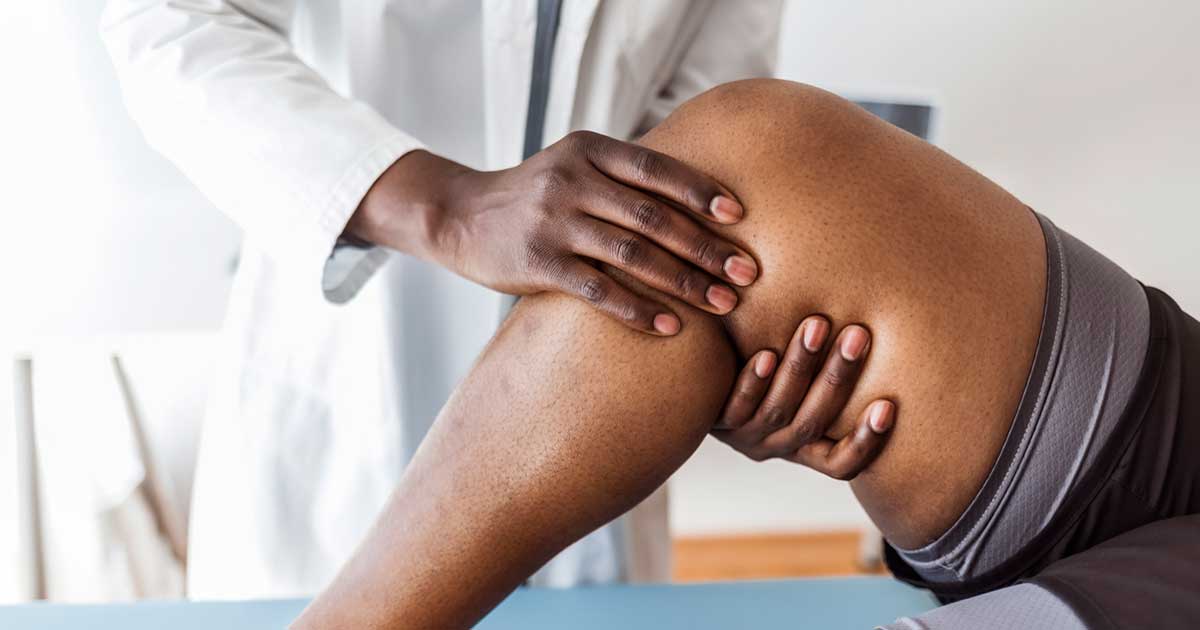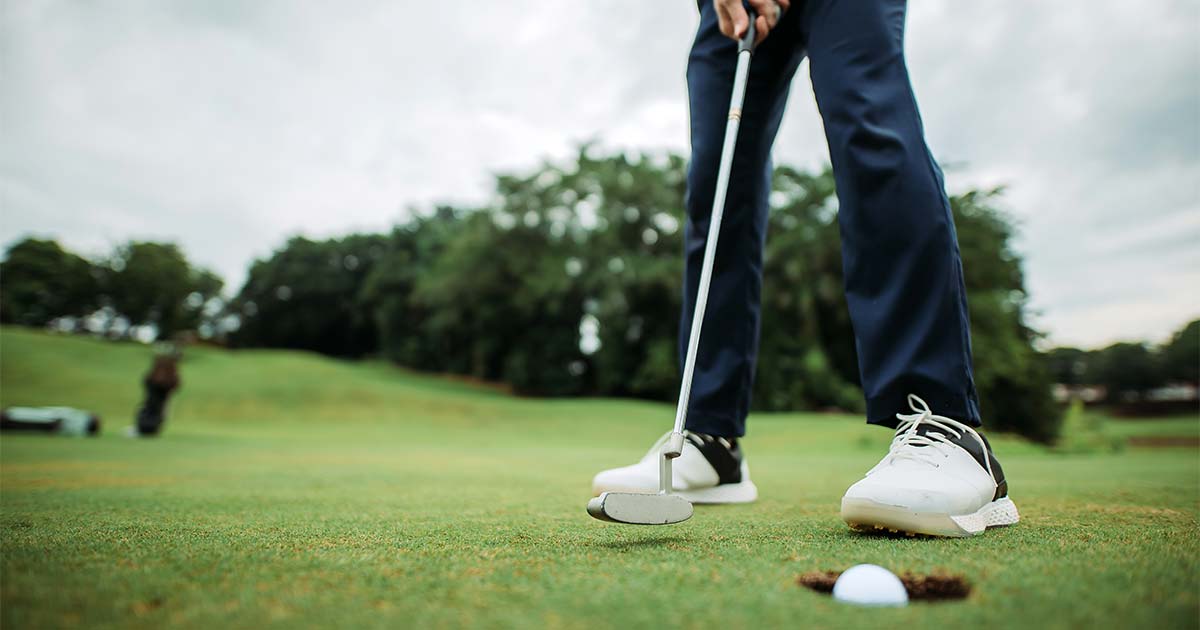
Advice to improve your movement, fitness, and overall health from the #1 in orthopedics in the U.S.
The Best Exercises After Knee Replacement, from a PT
Is a knee replacement in your future—or recent past? Learn how to ease back into an exercise routine after physical therapy, plus what to expect long-term.
Advice to improve your movement, fitness, and overall health from the #1 in orthopedics in the U.S.

Your first step toward recovery after knee replacement surgery starts a few hours after you awaken: A physical therapist will come to your room to get you moving and strengthening your new knee. “That’s a big surprise for many people,” says HSS physical therapist Vincent Luppino, PT, DPT, OCS.
Other common surprises: You’ll feel pretty good after your surgery and well into the next day, thanks to the medicine that’s still in your system. In fact, if your knee surgery was a result of painful arthritis, your recovery may be less uncomfortable than you’d expected—and the discomfort will diminish over time.
“PT after knee replacement is like a pyramid,” explains Luppino. The foundation is improving your range of motion, which is the focus for the first six weeks after surgery. The next layer is rebuilding strength, which happens from week six through 16. The last layer involves preparing you for whatever your ultimate goal is, whether that’s just being able to walk without discomfort, play with your grandkids or return to a competitive sport.
Here, Luppino walks through the stages and phases of physical therapy after knee replacement surgery.
The Three Phases of PT During Recovery
From a physical therapy standpoint, there are three phases of recovery.
In the hospital (1 to 3 days after surgery): Before you’re discharged, you’ll work with a physical therapist on activities you’ll need to do at home, including using a walker, getting into and out of bed and using the stairs (if needed). You’ll also start exercises to improve your knee’s range of motion, or ROM (that is, how far it can bend and extend). And you’ll do exercises to strengthen the quadriceps muscle in your thigh, which tends to be weak in people who need or have a knee replacement.
At home (2 or 3 weeks after surgery): As you keep doing your ROM and strength exercises, your knee will get stronger and more stable. You’ll be able to do more and more during rehab sessions and in everyday life. You’ll also learn how to walk with a cane and, eventually, without one.
Outpatient therapy (up to 4 months after surgery): This portion of recovery is incredibly important because it’s the one that takes you across the finish line. The exercises that follow will help you continue to strengthen your muscles and improve your flexibility and cardiovascular capacity as needed to get back to “normal” activity, whatever that means for you.
Long-Term Recovery from Knee Replacement
While outpatient therapy may end after about four months post-surgery, Luppino tells his patients they should keep doing their prescribed exercise program two or three times a week until at least eight or 10 months post-op. From months 10 to 12, he advises they continue the knee workouts once a week while adding in other types of activity.
“By month three, you’re about 75% recovered, and you can probably return to some form of a sport,” says Luppino. “But the last six to 12 months are when you really fully recover, so don’t give up on the program too early.” (And of course follow your healthcare team’s guidance on the specific exercises and time frames that are best for you.)
Exercises for Strengthening the Quads
“Most people going into this surgery have weak quadriceps,” says Luppino. That’s likely because knee pain has prevented them from doing much with that leg (or both legs). The less you use those muscles, the weaker they become. Then, during surgery, an incision is made into the quadriceps muscle above the kneecap, which also affects quad strength. That’s why quadriceps exercises are such a big part of post-replacement recovery.
Here are some movements Luppino typically prescribes for people on this post-op journey:
Extending. Sit with the knee bent, then fully straighten it and tighten (squeeze) the quadriceps on the extended leg.
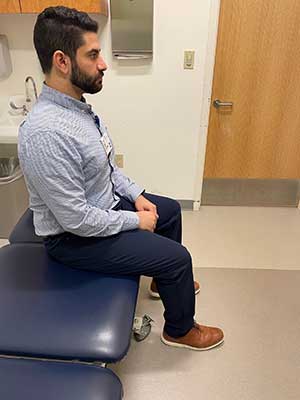
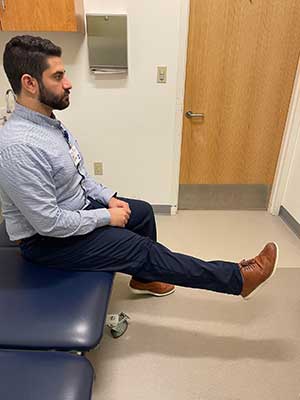
Squatting. Sit in a chair, stand up, then sit back down. This is the most basic version of a squat. You may progress from using a chair to removing the chair and, later, adding weights.
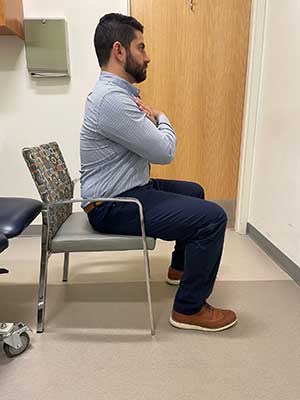
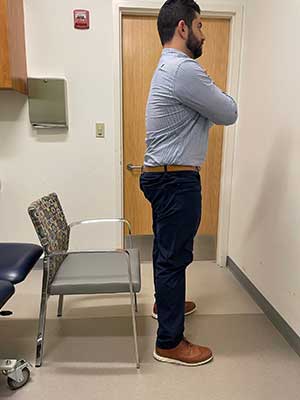
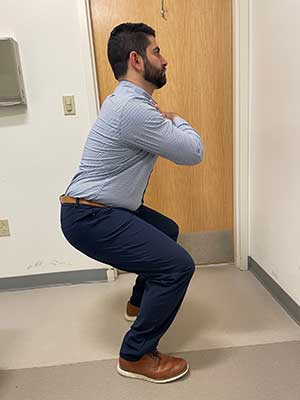
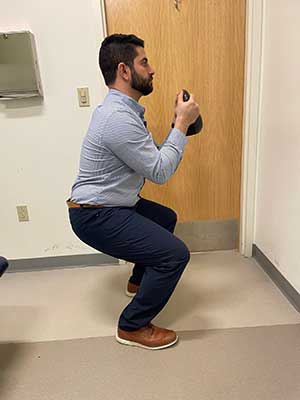
Stepping. Walk up and down a flight of stairs or step on and off of a step in the gym or at PT. This stepping-up movement strengthens the quads. Be sure you are ready for this movement and know how to do it safely before you try it on your own
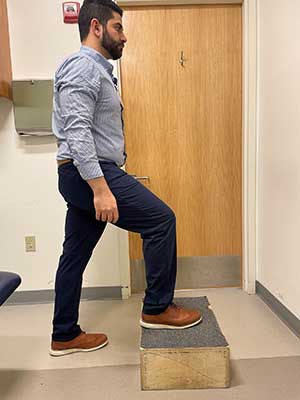
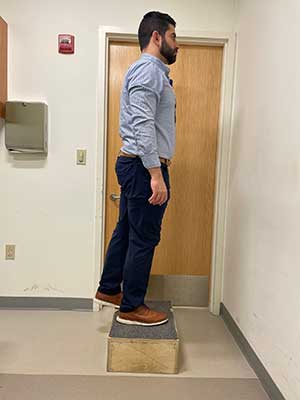
Stretching. Weak quads and bad knees generally go hand-in-hand with tight
hamstings, which are at the back of the leg. A simple version of a hamstring stretch starts with you flat on your back with your knees bent and feet on the floor. Clasp your hands behind one thigh above the knee, then raise that leg toward the sky/ceiling with your foot flexed, straightening it as much as possible. Hold for a few seconds. (You can do this on each leg, even if you only had one knee replaced.) See “Stretches and Exercises for Knee Pain, from a PT” for more ideas.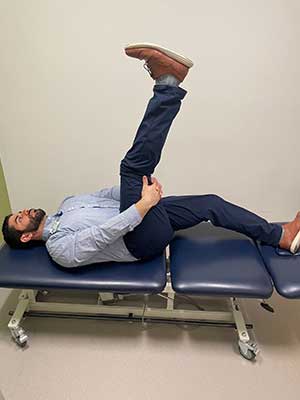
A General Progression
In the earlier stages of physical therapy, you might just be working with body weight (not holding any weights or adding extra resistance). Then you’ll progress to using elastic bands, ankle weights and light handheld weights (say, holding a dumbbell in each hand while stepping on and off an exercise step). Finally, you might move to exercise equipment like a leg press or leg extension machine.
“In the initial stages, using an exercise machine, rather than heavier handheld weights, offers unique benefits,” says Luppino. “First, the machine is stable, so you don’t have to try to balance while doing the movement. Second, your back is usually supported. And third, the machines tend to focus more on one or two joints and/or muscles because the rest of your body is supported or still.”
As you become stronger and more stable, your physical therapist may move you to exercises that require you to stand on two feet (or just one), which can help improve your balance as you build strength.
Making a Case for Cardio
Cardiovascular exercise, which gets your heart and lungs working harder, is another key part of post-knee surgery PT for a few reasons. Cardio raises your body temperature, which helps muscles stretch during flexibility movements. It also boosts the flow of blood (and the oxygen and nutrients it carries), which helps with healing. What’s more, it improves range of motion and strength (to varying extents, depending on the type). Types include swimming, water aerobics classes, riding an indoor bike, walking on a treadmill and taking a group exercise class that includes aerobic exercise moves.
During your first weeks of recovery, consider sticking to indoor machines and classes for your cardio. Being on a stable surface like a treadmill belt versus a bumpy sidewalk can reduce fall risk, and you can easily stop at any point (without having to call someone for a ride home). One caveat here: Luppino recommends staying off the elliptical for the first 12 weeks after knee surgery because the type of motion it creates can put more pressure on certain parts of the knee.
Keep Your Knees Happy
One more note from Luppino, especially to people who like to push their limits: “Don’t overdo it! Moving too much too soon can actually slow down the recovery process.
“I tell patients that I want a ‘happy knee’ when they come into therapy,” he says. “When you overdo it between our sessions, it irritates the knee, which can cause pain and swelling that can limit what we can do together.” Worse yet, if you hurt yourself, you could have to rest or even wind up needing another procedure. “When it comes to recovery, slow and steady wins the race,” he adds.
Published 4/19/2023

